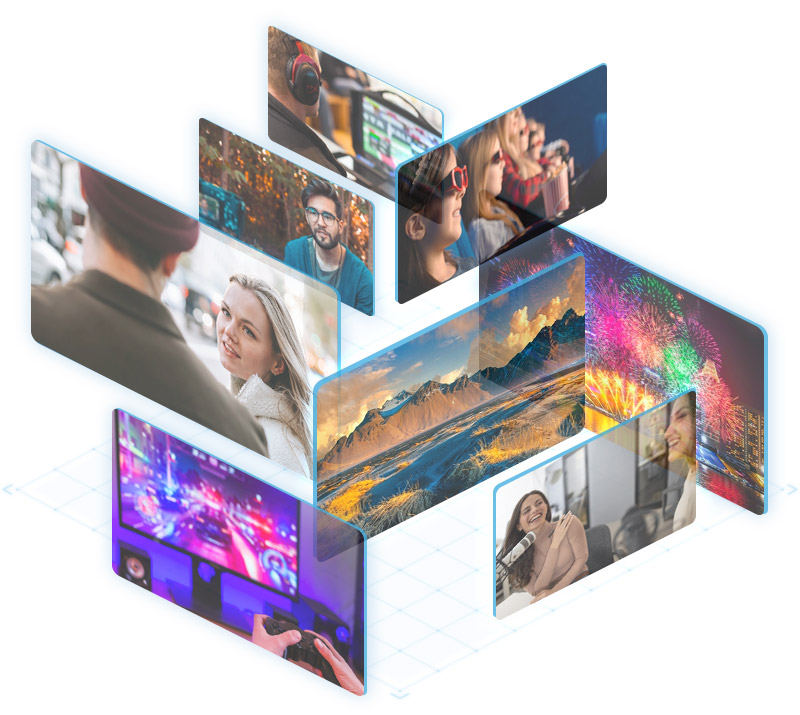
Audiovisual translation experts for:


Use of the best voice recognition software (speech-to-text), taking advantage of AI + an in-house application that automatically spots the subtitles and generates the SRT file. Then everything is carefully reviewed by our subtitlers.
Use of neural translation software, our translation memory and terminology databases to automatically generate a first working file. On this basis our translators/adaptors perform meticulous post-editing to guarantee high-quality subtitles that accurately reflect the source video’s audio content.
We provide the client with a Word file with all the subtitles so they can have them validated by their teams or commercial partners. We verify any changes the client suggests before deciding whether or not to insert them in the final subtitles.
The subtitles’ embedding is performed by our expert technicians who, during the edit, can also localize the video’s intertitles and other graphic elements. If the source files are provided to us, our video editors will be able to localize all of the source video’s animated sequences.
Subtitles placed in a single shot and synchronized with the soundtrack, they’re monochrome, white, with a shadow effect that’s customizable in normal or bold type with a choice of font. Italics are used during narration, to cite the titles of works, words in foreign languages, etc. …
Use of different colors for certain terms, dual subtitles, karaoke-style subtitles, keyboard subtitling (the character is typing a message on their phone or computer), use of special characters (emoticons, symbols…), fixed or specially-paced subtitles over multiple shots.
Subtitles embedded low on the screen and centered horizontally.
In the event of overlapping with other on-screen graphics, the subtitles are shifted higher up on the screen during this shot. For certain Asian languages (Japanese, Chinese, etc.) the possibility of inserting subtitles vertically on the right side of the screen. Finally, if a video is particularly graphics-heavy, to avoid overlapping we transform the video to 16:9 aspect ratio and place the subtitles in the black band at the bottom of the screen.
Appearance time ranging from 1 to 5 seconds, with an expected reading time of 17 characters per second. Subtitles appear on screen in one or two lines of 37 to 42 characters positioned pyramidally (first line shorter to free up the image). Finally, the gap (interval between blocks of subtitles) is 4 frames long, and 2 frames long after and before a change in shot.
For videos with specific constraints in certain shots, we apply the parameters necessary to allow the audience to read the subtitles in the spirit of the video (specially-paced subtitles, karaoke-style …).
We apply the editorial norms of the target country (punctuation and spacing, capitalization, Roman numerals, numbers, symbols, phone numbers…).
On the basis of the video and the original script, a technician specialized in detection will produce the script that constitutes the basis for the translation and adaptation. The work includes spotting all the IN/OUT timecodes of characters’ names for each of the actors’ lines, off-screen lines, the transcription of dialogue changes made by the actors themselves, notes for the translators, and an overall report.
The translator/adaptor works from the post-detection phase adapted script, a version of the script pre-translated by NTM software and CAT tools, show guides and glossaries, information related to previous productions, and the set director’s instructions.
Our revisers perform a detailed verification of every line to ensure the fluidity of the translation and pauses so that they match up perfectly with the actor’s lip movements. We also make sure that each translated script is formatted per the client’s wishes so that they can then easily integrate it into their own software (including any eventual specific terminology).
Our project manager is in constant contact during the studio recording process to communicate specific issues that arose in previous phases and to take note of changes made by the actors. We keep them in mind for the future to guarantee the continual improvement of our services.
For the standard layout of the adapted script, we indicate the SMPTE timecodes, abbreviations, pauses, lines and, in addition to the notes, we use color codes to indicate lines reprised from other episodes, flashbacks, summaries … But we are also extremely adaptable, and can apply specific layouts to fit the needs of and software used by the recording studio.
Beyond the classic terms and abbreviations (INT, EXT, OC, OS…), we also use specific norms such as differentiating between pauses (brief interruption, half-second pause, one-second pause, two-second pause…), or (EV) for a line that is barely audible, in order to give the set director as much information as possible.
File that guarantees terminological consistency between intertitles, subtitles and dubbing, as well as between the seasons and episodes of the same TV series.
When available, all such information is taken into account in our translated/adapted scripts.
Presented in an Excel file in order of appearance or alphabetically, according to the set director’s preferences, and indicating the characters’ sex and age. One tab is also reserved for pronunciation guidelines. The file is pre-formatted to allow script lining.
To facilitate the management of actors between different seasons and episodes, our scripts indicate the first appearance of minor characters (for example, POLICEMAN S2E3 for season 2 episode 3).
In the absence of specific instructions (such as a show guide), we leave the line in the foreign language and translate it in a note so that the recording studio has the choice.
Hesitations, mumbling, inaudible lines … everything is taken into account.
AI-driven translations by audiovisual linguistic experts.
Digital Brain Studio LLC
8865 Commodity Circle
Suite 12
Orlando, Florida 32819 – USA